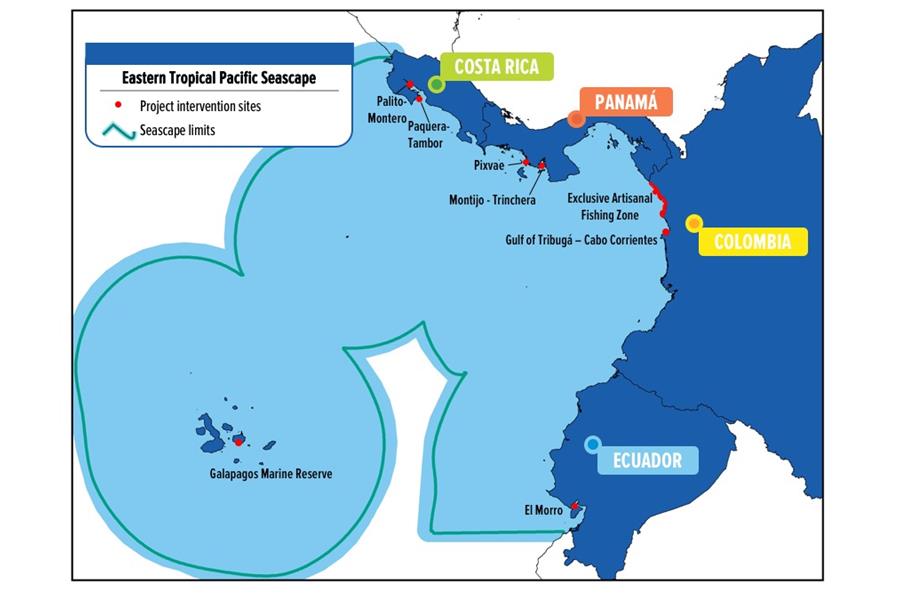Nations Pledge To Protect 65 Percent Of The Eastern Tropical Pacific
Definitions of what constitutes the Eastern Tropical Pacific vary widely. In some minds, including that of the author, the area can best be defined as the millions of square kilometers of ocean from the most northerly shores of Baja California to the colder coasts of Southern Peru. However, what everyone can agree on is an area called the Eastern Tropical Pacific (or ETP) Seascape, an area covering 770,000 square kilometers.
Covering virtually the entirety of the waters of Colombia, Ecuador, Costa Rica, and Panama, this area is one of the most biodiverse regions on Earth. It is the single most important shark migration route on the face of the planet, home to such sights as schooling hammerheads. It is also home to dozens of species of rays, endangered marine mammals, and some of the most threatened sea turtle populations anywhere in the seas.
Protecting the Eastern Tropical Pacific has been a high priority for marine conservationists for decades, and COP26 saw the stars align. Aside from a new emphasis on boosting marine reserves, which currently cover less than 10 percent of the oceans, to protect 30 percent of the oceans, there was a pledge made by the four aforementioned nations of the ETP Seascape. They signed an agreement to protect 500,000 of the 770,000 square kilometers of ocean, or roughly 65 percent of it. This will make the "Super-MPA" the largest in the Western Hemisphere.
Already, action has been taken. In early November, Ecuador announced its plans to expand the area of the Galápagos by 60,000 square kilometers, or 50 percent. Part of the area will be off limits to all fishing while part of it will be off limits to longlining specifically, the most notorious fishing practice for sharks. In December, Costa Rica announced that it would expand the size of the Cocos Island Marine Reserve by 27 times while also creating a Bicentennial Marine Reserve bigger than the entirety of Costa Rica's land area. Cocos Island will remain off limits to all fishing, while the Bicentennial Marine Reserve will be a special management area. Colombia and Panama have yet to announce their expansions but are expected to do so within the next few months.
These marine reserves will fill a critical gap in protection for migratory species: they were once protected inside the marine reserves but subject to wholesale slaughter the second they left these waters. This new announcement will connect the "Big Four" marine reserves, which also include Coiba Island and Malpelo Island.
The key now will be enforcement. The ETP has already had a problem with poaching, and part of the reason this reserve was created in the first place was in response to concerns about a massive Chinese squid fishing fleet engaged in illegal fishing and labor abuses that were documented by Sea Shepherd Conservation Society just outside the Galápagos. Sea Shepherd has a 22-year history in the region, and I would recommend these governments, all four of which have partnerships with the group or have had partnerships in the past, bring on these experts in anti-poaching and the Eastern Tropical Pacific to ensure that the protections on paper are a reality on the ground.
Marine conservation has had many success stories, from bringing back the great whales from their state of near extinction brought about by whaling to drawing attention to and ultimately halting the decline of tuna populations, from banning driftnet fishing to overhauling fishing regulations to save sea turtles, from saving tens of millions of dolphins from dying in tuna nets to shutting down the sealing industry commercially. If properly enforced, this announcement could be one of the biggest sucess stories in marine conservation history.

Comments
Post a Comment